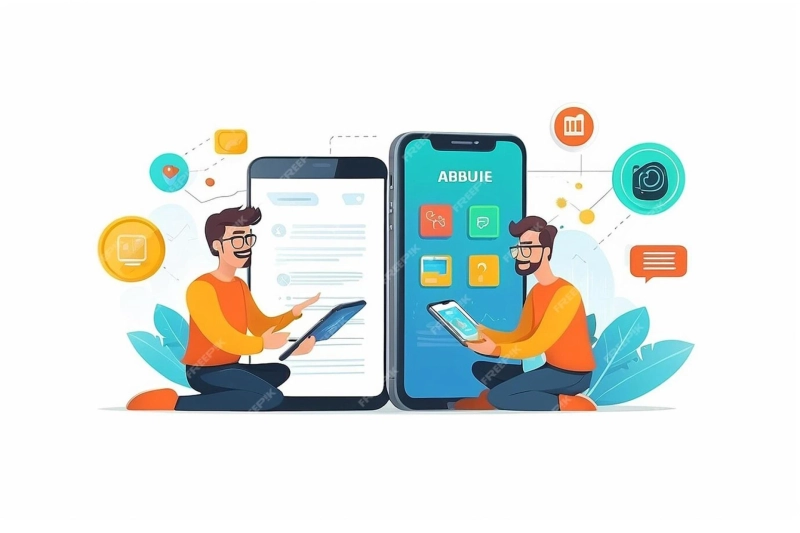On-demand app development services have become essential in the fast-paced world of today. These apps, which range from food delivery services like Zomato to ride-hailing services like Uber, meet consumers' immediate requirements with a few taps. This tutorial will walk you through the crucial processes and considerations to ensure the success of your on-demand service mobile app if you're seeking to design one.
1. Identify Your Market and Niche
Before diving into development, it's crucial to understand the market landscape. Conduct thorough research to identify the demand for the service you intend to offer. Consider these factors:
Target Audience: Who will use your app? Understand their preferences, pain points, and behavior.Competitors: Analyze existing apps in your niche. Identify their strengths and weaknesses to carve out your unique selling proposition (USP).Market Demand: Validate the demand for your service through surveys, focus groups, and market analysis.2. Define Your Unique Selling Proposition (USP)
What will differentiate your app from the competition is your USP. Anything from quicker service delivery to special features, better customer service, or exclusive collaborations could be the cause. Make sure your USP fills a particular demand or gap in the market.
3. Choose the Right Business Model
Selecting the appropriate business model is critical for the sustainability of your app. Common models include:
Freemium: Basic services are free, with premium features available at a cost.Subscription: Users pay a recurring fee for access to services.Commission-Based: The app earns a commission on each transaction made through the platform.In-App Purchases: Users can buy additional features or services within the app.4. Essential Features for an On-Demand Service App
To ensure a seamless user experience, your app should include the following features:
User App Features
User Registration/Login: Easy sign-up options via email, phone, or social media.Service Listings: Comprehensive listings of available services with details and pricing.Search and Filters: Advanced search options with filters to refine results.Booking and Scheduling: Options for immediate or scheduled service bookings.Payment Integration: Multiple payment options, including credit/debit cards, digital wallets, and COD.Order Tracking: Real-time tracking of service providers and order status.Reviews and Ratings: Allow users to rate and review services and providers.Customer Support: In-app chat or call support for assistance.Service Provider App Features
Registration and Profile: Easy sign-up and profile management.Service Management: Interface to manage services, availability, and pricing.Order Notifications: Instant alerts for new service requests.Navigation: GPS-enabled route optimization for reaching customers.Earnings and Reports: Track earnings and view service history.Admin Panel Features
Dashboard: Overview of all activities, including orders, service providers, and user metrics.User Management: Manage user profiles, service providers, and service listings.Analytics: Detailed reports on app performance, user engagement, and financials.5. Design a User-Friendly Interface
A seamless and intuitive user interface (UI) is vital for user retention. Focus on:
Simple Navigation: Ensure easy navigation through all features.Attractive Design: Use appealing visuals and a consistent color scheme.Responsive Design: Optimize the app for various devices and screen sizes.6. Choose the Right Technology Stack
The technology stack forms the backbone of your app. Key components include:
Frontend: React Native, Flutter for cross-platform development.Backend: Node.js, Ruby on Rails, or Django for server-side operations.Database: MySQL, MongoDB, or PostgreSQL for data storage.Cloud Services: AWS, Google Cloud, or Azure for scalable hosting.Payment Gateway: Stripe, PayPal, or Braintree for secure transactions.7. Develop and Test the App
Start with a Minimum Viable Product (MVP) that includes essential features. This approach allows you to test the app in the real world and gather user feedback for improvements. Ensure rigorous testing to identify and fix bugs, optimize performance, and ensure security.
8. Launch and Market Your App
Plan a smart launch for your app when it's ready. Utilize influencer relationships, social media, digital marketing, and local advertising to generate buzz. To draw users, provide incentives like discounts, promotions, or referral bonuses.
9. Gather Feedback and Iterate
After the launch, keep an eye out for areas that need improvement by collecting user feedback. Your app will remain competitive and relevant with regular upgrades and feature improvements based on user feedback.
Conclusion
Careful planning, development, and constant iteration are required when developing a mobile app for an on-demand service. You can create a successful on-demand service app that caters to the wants of your target audience by comprehending your market, establishing a distinct USP, selecting the ideal features, and utilizing the suitable technology stack. Your app can prosper in the cutthroat on-demand service market with consistent optimization and a potent marketing plan.


